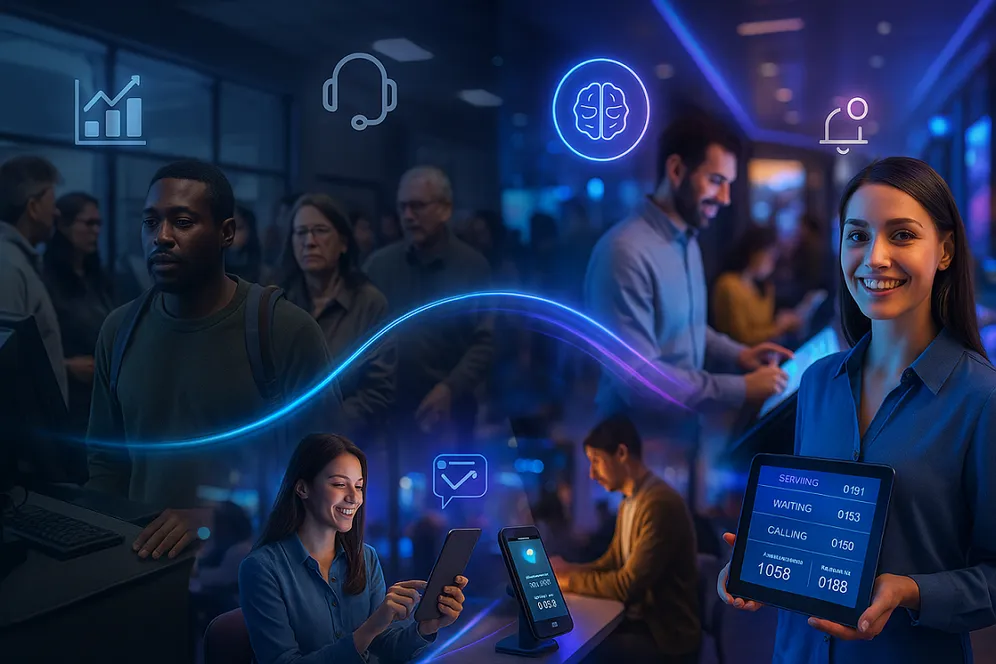Introduction: Why Adaptive CX is the New Business Imperative
We live in a world that doesn’t stand still. Customers evolve faster than enterprise systems can catch up. Today, what works for your customers at 9 a.m. may fall short by 3 p.m. Whether it’s a sudden shift in footfall, an economic hiccup, or a viral social trend, brands must be able to adapt instantly and intelligently.
This isn’t just about keeping up with trends. It’s about staying relevant, trusted, and responsive in environments where customer loyalty is as fleeting as a dropped call.
Enter Adaptive Customer Experience (CX): a philosophy and platform approach that enables brands to anticipate, adjust, and personalise experiences in real time, at scale. Let’s unpack what makes Adaptive CX essential—and how modern enterprises can make it a strategic advantage.
Real-Time Intelligence: Seeing What Customers Need, Before They Ask
The modern customer experience begins with listening—not just to what customers say, but to what their behaviours reveal.
An adaptive CX platform continuously ingests real-time data—clicks, wait times, location, past interactions—and uses this to shape the next best action. For example, if a customer lingers too long at a digital kiosk or abandons a form halfway, the system can alert a staff member or trigger a WhatsApp prompt offering help.
In BFSI and retail, this can mean dynamically adjusting appointment slots when walk-ins spike, or nudging customers toward faster service routes based on real-time branch loads.
Real-time intelligence doesn’t just optimise operations—it creates moments of magic that feel intuitive and deeply personal.
AI-Powered Personalisation: From Generic to Genius
For too long, personalisation meant inserting a name into an email or offering last month’s promo again.
Adaptive CX takes this further—using AI and machine learning to personalise journeys at every step, based on live context and evolving preferences.
Imagine a retail customer browsing ethnic wear on an app. A few hours later, she walks into a flagship store, and the in-store assistant already knows her preferences, offers queue-less checkout, and books a trial appointment. That’s not a coincidence—it’s AI-powered orchestration that turns browsing into buying.
In banking, personalisation can mean surfacing a pre-approved loan offer as soon as a customer shows buying intent online. It’s contextual, convenient, and customer-first.
And crucially, it’s scalable.
Composable CX Architecture: The Platform That Grows With You
The challenge with traditional CX systems is that they are rigid. You buy a monolithic tool and hope it adapts to your needs. But today’s businesses change direction often, and so should their technology.
A composable CX platform is built on microservices and modular plug-ins. Want to add walk-in appointment blending for your hospital? Or queue management for your retail counter? Or WhatsApp-based check-ins for your government office? No re-engineering required.
VirtuaQ’s modular architecture is designed to scale across geographies, channels, and formats, with minimal tech friction. That’s what makes CX truly adaptive—not just from the user’s perspective, but from IT and operations as well.
Human + Bot Collaboration: Let Technology Assist, Not Replace
Automation is powerful, but empathy still matters.
Customers expect speed, but not at the cost of understanding. Adaptive CX blends intelligent automation with human-in-the-loop design, so that complex needs are escalated, not ignored.
A smart bot may handle appointment confirmations or status checks. But when a patient expresses concern about a delay, the system seamlessly routes them to a live agent, armed with the full interaction history.
In high-touch environments like healthcare or finance, this balance is critical. You scale without losing the human touch. And your staff are freed to focus on where they matter most.
Proactive Orchestration: Don’t React—Anticipate
One of the most powerful aspects of Adaptive CX is that it allows you to move from reactive firefighting to proactive engagement.
Instead of waiting for complaints to surface, your CX engine identifies friction points before they become deal-breakers. For example:
- If wait times cross a threshold, VirtuaQ alerts floor staff.
- If a customer is likely to abandon a form, a real-time chatbot offers to help.
- If post-visit feedback flags low satisfaction, an immediate follow-up message or offer can recover the moment.
Adaptive CX isn’t just reactive—it’s predictive. It orchestrates experiences with foresight, not just hindsight.
The Business Case: Adapt or Be Forgotten
There’s a clear ROI to adaptive CX. According to research:
- 80% of customers are more likely to purchase from brands offering personalised experiences.
- Businesses that lead in CX outperform laggards by nearly 80% in revenue growth.
- Adaptive strategies reduce service costs by automating repetitive journeys while improving NPS.
But beyond numbers, the real cost of not adapting is invisibility. In a crowded market, irrelevance is just one bad journey away.
Conclusion: From Static to Strategic CX
In a world of constant change, static CX strategies fall short. Customer loyalty is built not on policies, but on how fast and how well a business can adapt to change, with empathy, intelligence, and action.
Adaptive CX is not a trend—it’s a necessity.
VirtuaQ’s adaptive CX platform helps enterprises:
- Orchestrate journeys in real time
- Blend human and automated touchpoints
- Scale rapidly across physical and digital environments
- Learn from every interaction to improve the next
When change is the only constant, your CX needs to be just as dynamic.
Let’s Future-Proof Your CX
Your customers have changed. Has your CX strategy?
Schedule a demo or talk to VirtuaQ’s team about building adaptive, intelligent, and scalable CX for your enterprise.
